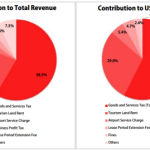A number of recent editorials have referred to the recent coup in the Maldives as the undoing of the country’s own ‘Arab Spring,’ which began with the landmark 2008 elections that brought to an end 30 years of autocratic rule, write Gabriele Koehler and Aniruddha Bonnerjee for the Institute of Development Studies.
Indeed, while the status of democratic process in the Maldives more closely resembles other South Asian nations than nations involved in the Arab uprising, economic and social strains in the Maldives are akin to those that preceded the Arab Spring.
Economically and socially, there are three Maldives:
‘Maldives I’ is that of the sparkling tourist resorts isolated from the rest of the country on coral islands. Tourism is the Maldives’ largest industry and resort leasers represent a substantial and powerful economic interest group. The other Maldives are local economies.
‘Maldives II’ is made up of 1,192 islands dispersed across 90,000 square kilometres, where 205,000 Maldivians make a living from coastal fishing and related occupations.
‘Maldives III’ is the capital island of Malé, home to 103 thousand and one of the most densely populated places in the world.
Under the autocratic Gayoom regime, the Maldives made substantial progress on education and health criteria, despite the high costs of delivering services to widely-scattered islands. By 2000, the country had achieved universal primary and lower-secondary education and had almost eliminated communicable diseases.
In 2008, the central challenge for the newly-democratic government under President Nasheed was to maintain good performance on social services despite a high fiscal budget debt. At the same time, the global financial crisis affected the tourism sector as well as domestic prices of food and energy.
In response, Nasheed’s government focused on expanding inter-island transport, universalising health insurance, protecting the social sectors (health, education, child and family welfare) while trimming the public sector bill. It sought investment through a programme of public-private partnerships.
The financial strategy revolved around monetising the deficit, seeking grants and loans from donors, and rescheduling medium and long term debt obligations. Combined with rising food and fuel prices, this strategy fuelled inflation. Political opposition and low capacity restricted other reforms.






and 'Maldives IV' is the islamist state within Maldives III that is threatening to send Maldives back to the stone age